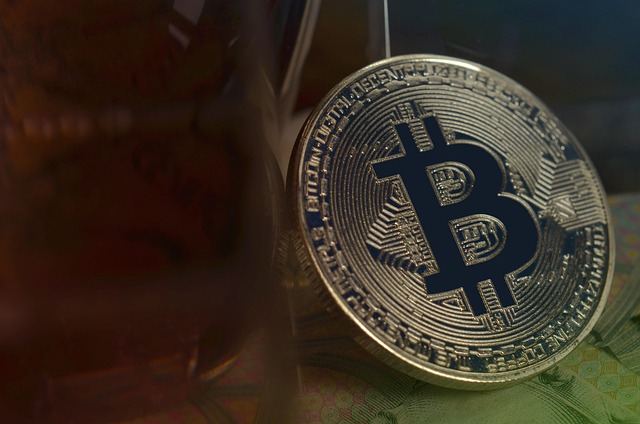Google Play blocks access to 17 unregistered exchanges in South Korea
Google Play implemented access restrictions to 17 unregistered overseas crypto exchanges catering to local users in South Korea at the request of the country’s regulators. On March 21, the Financial Intelligence Unit (FIU) of the South Korean Financial Services Commission (FSC) said it was considering sanctions against operators that did not report to the relevant authorities. Authorities require virtual asset service providers (VASPs) to report to regulators under the country’s Specified Financial Information Act. At the time, the FIU said it was coordinating with the Korea Communications Standards Commission (KCSC), the regulator in charge of the internet, on how they could block access to the exchanges. By March 26, the FSC published a list of 22 unregistered platforms, highlighting 17 that had been blocked from the Google Play store. The move restricts new downloads and updates for affected apps, effectively limiting user access.A list of 22 overseas operators, highlighting the 17 blocked exchanges. Source: FSCGoogle Play restricts access to 17 unregistered exchangesThe FSC said the 17 exchanges highlighted on the list were now restricted in the Google Play Store. This means their applications will not be available for new users to download and install. In addition, existing users will be unable to access updates from the apps. Exchanges in the access restriction list include: KuCoin, MEXC, Phemex, XT.com, Biture, CoinW, CoinEX, ZoomEX, Poloniex, BTCC, DigiFinex, Pionex, Blofin, Apex Pro, CoinCatch, WEEX and BitMart.The FSC expects the move to help prevent money laundering acts using crypto assets and potential future damages to local users. The FIU said it is also coordinating with Apple Korea and the KCSC to block internet and App Store access to the exchange platforms. KuCoin previously told Cointelegraph that it was monitoring regulatory developments in all jurisdictions, including South Korea. The exchange said compliance was essential for crypto’s sustainable growth. However, the exchange did not provide detailed information on its plans for South Korea. Related: Wemix denies cover-up amid delayed $6.2M bridge hack announcementSouth Korean exchanges face controversiesSouth Korean regulators’ actions against unregistered exchanges follow the country’s increased scrutiny of crypto trading platforms. On March 20, Seoul’s Southern District Prosecutors’ Office raided Bithumb offices in the country, as prosecutors suspected financial misconduct involving the exchange’s former CEO. Prosecutors suspected Bithumb board member Kim Dae-sik of using company funds to purchase a personal apartment. In addition, a Wu Blockchain report of intermediaries being paid to list token projects on Bithumb and Upbit surfaced. In response to the report, Upbit demanded the release of the identities of crypto projects that claimed to have paid intermediaries to be listed. Magazine: Ridiculous ‘Chinese Mint’ crypto scam, Japan dives into stablecoins: Asia Express
SEC plans 4 more crypto roundtables on trading, custody, tokenization, DeFi
The US Securities and Exchange Commission will host four more crypto roundtables — focusing on crypto trading, custody, tokenization and decentralized finance (DeFi) — after hosting its first crypto roundtable on March 21.The series of roundtables, organized by the SEC’s Crypto Task Force, will kick off with a discussion on tailoring regulation for crypto trading on April 11, the SEC said in a March 25 statement.A roundtable on crypto custody will follow on April 25, with another to discuss tokenization and moving assets onchain on May 12. The fourth roundtable in the series will discuss DeFi on June 6.A series of four crypto roundtable discussions are scheduled from April through to June. Source: SEC“The Crypto Task Force roundtables are an opportunity for us to hear a lively discussion among experts about what the regulatory issues are and what the Commission can do to solve them,” said SEC Commissioner Hester Peirce, the task force lead.The specific agenda and speakers for each roundtable have yet to be disclosed, but all are open for the public to watch online or to attend at the SEC’s headquarters in Washington, DC.SEC softens on crypto with new leadershipThe agency’s Crypto Task Force was launched on Jan. 21 by acting SEC Chair Mark Uyeda. It’s tasked with establishing a workable crypto framework for the agency to use. The task force held its first roundtable on March 21 with a discussion titled “How We Got Here and How We Get Out — Defining Security Status.”The SEC will also be hosting a roundtable about AI’s role in the financial industry on March 27, according to a March 25 release. Join us on March 27 for a roundtable discussion on artificial intelligence in the financial industry. Topics include the risks, benefits, and governance of AI. More details: https://t.co/ekX2RWp2KQ pic.twitter.com/7fH3j1tlwj— U.S. Securities and Exchange Commission (@SECGov) March 25, 2025The roundtable will discuss the risks, benefits, and governance of AI in the financial industry, with Uyeda, Peirce and fellow SEC Commissioner Caroline Crenshaw slated to speak.Under the Trump administration, the SEC has slowly been walking back its hardline stance toward crypto forged under former SEC Chair Gary Gensler.The regulator has dismissed a growing number of enforcement actions against crypto firms it launched under Gensler.Related: Bitnomial drops SEC lawsuit ahead of XRP futures launch in the USUyeda, who took the reins after Gensler resigned on Jan. 20, flagged plans on March 17 to scrap a rule proposed under the Biden administration that would tighten crypto custody standards for investment advisers.Uyeda also said in a March 10 speech that he had asked SEC staff for options to abandon part of proposed changes that would expand regulation of alternative trading systems to include crypto firms, requiring them to register as exchanges. Magazine: SEC’s U-turn on crypto leaves key questions unanswered
Pirating pioneer Napster sells for $207M with plans for music metaverse
Artificial intelligence startup Infinite Reality has acquired the music-pirating app turned music streaming service Napster in a $207 million deal and plans to add a music-focused metaverse. Infinite Reality said in a March 25 statement that Napster would offer “branded 3D virtual spaces” to allow virtual concerts and “social listening parties” along with the ability to offer virtual merchandise.“Imagine stepping into a virtual venue to watch an exclusive show with friends, chat with your favorite artist in their own virtual hangout as they drop their new single, and be able to directly buy their exclusive digital and physical merch,” said Napster CEO Jon Vlassopulos, who will continue in his role amid the acquisition.“The internet has evolved from desktop to mobile, from mobile to social, and now we are entering the immersive era,” he added.”The most legendary collab?! Infinite Reality has acquired iconic online music brand @Napster.With this acquisition, we’re expanding and reimagining Napster, empowering artists with new audience monetization and engagement capabilities, underpinned by iR’s #immersive… pic.twitter.com/L4Fig7QFct— Infinite Reality (@Infinite_iR) March 25, 2025Infinite Reality added that it also plans for Napster to allow musicians to use AI customer and community management agents and analytics dashboards to track fan behavior and cross-promotion with its other entertainment properties, such as Esports teams.Napster’s latest repurposingNapster was a pioneer in piracy, launching in 1999 as a peer-to-peer (P2P) filing-sharing service mostly for music. It shuttered in 2001, buried by a court order after a wave of copyright infringement lawsuits.The now-bankrupt company sold its brand, which was relaunched as a music-streaming service before bouncing between owners for the next 20 years. The blockchain firm Algorand and crypto investment firm Hivemind most recently bought it in 2022.Related: Here’s what musicians actually think of tokenizing content in Web3Napster had made several moves in the Web3 space, announcing plans in June 2022 to launch its own Napster token on the Algorand blockchain that could be used to buy music subscriptions and other content. The brand also bought Web3 music startup Mint Songs in February 2023.Source: NapsterJohn Acunto, co-founder and CEO of Infinite Reality, said the team hopes to lead an “internet industry shift from a flat 2D clickable web to a 3D conversational one.” Infinite Reality says the acquisition of Napster is slated to close in a few weeks. According to the firm, it hopes to evolve the Napster brand to become the leading immersive music platform for artists, fans and curators through audience monetization and engagement capabilities.Magazine: Memecoins are ded — But Solana ‘100x better’ despite revenue plunge
Bitcoin sellers lurk in $88K to $90K zone — Is this week’s BTC rally losing steam?
Many Bitcoin (BTC) traders became bullish this week as prices rallied deep into the $88,000 level, but failure to overcome this level in the short term could be a take-profit signal. Alphractal, a crypto analytics platform, noted that Bitcoin whales have entered short positions at the $88,000 level. In a recent X post, the platform highlighted that the “Whale Position Sentiment” metric exhibited a sharp reversal in the chart, indicating that major players with a bearish bias have stepped. The metric defines the relationship between the aggregated open interest and trades larger than $1 million across multiple exchanges.Bitcoin: Whale position sentiment. Source: XAs illustrated in the chart, the two circled regions are synonymous with Bitcoin price falling to the $88,000 level. Alphractal said, “When the Whale Position Sentiment starts to decline, even if the price temporarily rises, it is a strong signal that whales are entering short positions, which may lead to a price drop.”Alphractal CEO Joao Wedson also confirmed that whales had closed their long positions and that prices have historically moved according to their directional bias. Bitcoin: Bull score signals. Source: CryptoQuantSimilarly, 8 out of 10 onchain signals on CryptoQuant have turned bearish. As highlighted above, with the exception of the stablecoin liquidity and technical signal indicators, all the other metrics flash red, underlining the likelihood of a possible pullback in Bitcoin price. Last week, Ki Young Ju, CEO of CryptoQuant, noted that the markets were entering a bear market and that investors should expect “6-12 months of bearish or sideways price action.”Related: Will Bitcoin price hit $130K in 90 days? Yes, says one analystBitcoin outflows reach $424M in 7 daysWhile onchain metrics turned red, some investors exhibited confidence in Bitcoin. Data from IntoTheBlock highlighted net BTC outflows of $220 million from exchanges over the past 24 hours. The sum reached $424 million between March 18 to March 24. This trend implies that certain holders are accumulating. Bitcoin net outflows by IntoTheBlock. Source: XOn the lower time frame (LTF) chart, Bitcoin formed an intraday high at $88,752 on March 24, but since then, BTC has yet to establish a new intraday high. Bitcoin 4-hour chart. Source: Cointelegraph/TradingViewWith Bitcoin moving within the trendlines of an ascending channel pattern, it’s expected that the price will face resistance from the upper range of the pattern and 50-day, 100-day, exponential moving averages on the daily chart. With whales possibly shorting between $88,000 and $90,000, Bitcoin needs to close above $90,000 for a continued rally to $100,000. Related: Bitcoin sets sights on ‘spoofy’ $90K resistance in new BTC price boostThis article does not contain investment advice or recommendations. Every investment and trading move involves risk, and readers should conduct their own research when making a decision.
Bitcoin flips 'macro bullish' amid first Hash Ribbon buy signal in 8 months
Bitcoin (BTC) traders are celebrating as one of the best-known BTC price metrics finally flipped bullish again.The popular Hash Ribbon tool, created by quantitative Bitcoin and digital asset fund Capriole Investments, printed a first buy signal in a “macro bullish” event.Hash Ribbon sparks $100,000 Q2 BTC price targetBitcoin miners look set to make a comeback as the Hash Ribbon metric marks the end of their latest “capitulation” phase.The Hash Ribbon tracks potential long-term buy opportunities using hashrate; when miner profitability is at risk and network participants retire, this forms the capitulation which in turn leads to long-term price reversals.These are monitored using two moving averages of hashrate: the 30-day and 60-day. Capitulations correspond to the former crossing below the latter, while the reverse is true for buy signals.According to data from Cointelegraph Markets Pro and TradingView, the Hash Ribbon put in its latest buy signal on March 24. It is visible on both daily and weekly timeframes.“This is macro Bullish,” trader Titan of Crypto wrote on X.BTC/USD 1-week chart with Hash Ribbon data. Source: Cointelegraph/TradingViewThe previous Hash Ribbon buy signal came in July 2024. At the time, BTC/USD had yet to bottom out, and it took several months before a wave of upside began.A similar scenario happened after a buy signal printed in August 2023.Optimism over the latest development seemed tangible after much of Q1 2025 was marred by disappointing BTC price action.“One of the most accurate mid-term indicators is bullish now,” fellow trader Robert Mercer added.“Expecting $BTC to go back above $100,000 in Q2 of 2025!”Bitcoin ends “multimonth RSI downtrend”As Cointelegraph reported, Bitcoin has already begun to tease a bullish market turnaround as March nears a close.Related: Bitcoin must reclaim this key 2025 level to avoid new lows — ResearchChief among the signs is the relative strength index (RSI) indicator, which, like the Hash Ribbon, is in the process of returning to form after months of suppression.On weekly timeframes, RSI has confirmed a bullish divergence for the first time since September, while the daily chart is showing a support retest after breaking through a downward trend line in place since November.“The multimonth RSI Downtrend is over,” trader and analyst Rekt Capital confirmed to X followers this week.BTC/USD 1-day chart with RSI data. Source: Rekt Capital/XThis article does not contain investment advice or recommendations. Every investment and trading move involves risk, and readers should conduct their own research when making a decision.
How to bridge to Solana
Key takeawaysBridging assets to Solana allows you to diversify digital assets across chains and access Solana’s Web3 benefits, which include DApps, DeFi and NFTs.Decentralized bridging platforms like Portal provide an efficient way to bridge to Solana from multiple blockchains. You can connect your wallets and transfer in minutes.Centralized platforms like OKX and Binance offer an alternative method linked to your exchange account and wallet for those nervous about decentralized mechanisms.The Solana bridging process involves connecting your source and destination wallets to a bridging platform, inputting the transaction details, and confirming the transfer. The world of digital assets is filled with opportunity. Once you understand the basics of blockchains and Web3, it’s natural to start looking for new ways to diversify your portfolio, whether through trading new tokens, trying out different decentralized applications (DApps), or earning from decentralized finance (DeFi) infrastructure. To get the most out of your digital assets, you’ll need to learn how to transfer assets between various blockchains, such as how to bridge to Solana from Ethereum. The only problem is that moving assets between blockchains can feel like a complex, daunting task, especially for those who are not tech-savvy. Bridging assets can seem fraught with risks, such as losing funds due to transaction mistakes or security vulnerabilities. But the good news is that bridging to Solana doesn’t have to be a stressful experience. This Solana token bridge guide offers a step-by-step process, including explanations and images. So, in just a few minutes, you’ll know how to bridge to Solana safely and securely. What is a Solana bridge?Crypto bridges are now a core part of the blockchain industry, enabling interoperability between multiple networks. As the name suggests, a bridge is a way to transfer assets and information from one blockchain to another. Solana is one of the busiest blockchain networks, and it uses bridges to interact with other chains. This allows users and developers to build a flow of crypto tokens and data between Solana and other networks. For example, people regularly transfer stablecoins between Ethereum and Solana using crosschain bridges, meaning a bridge can be used to transfer Tether’s USDt (USDT) from Ethereum to Solana and vice versa. The precise process required to bridge can vary depending on the assets, chains and bridge platform used. Most commonly, the Solana bridging mechanism will lock the collateral assets to the source chain. Then, it will mint the equivalent value of the mirrored asset on the destination chain. This is known as a lock-and-mint system.While the circulating supply of the original asset remains unaffected, the process effectively creates a wrapped version of the asset on the destination chain, which has its own supply metrics.In the reverse process, called burning and minting, the system burns (destroys) the wrapped asset and mints (releases) the locked token, putting it back into circulation on the native blockchain.Did you know? The process of transferring tokens between different blockchains, commonly known as “wrapping,” is facilitated by Wormhole, one of the bridging solutions for Solana. Wormhole securely enables cross-chain asset transfers, making tokens from one blockchain usable on another.Preparing for a crosschain bridge to SolanaBefore jumping into the Solana bridging process, there’s a bit of housekeeping to attend to.Firstly, you’ll need to ensure you have the correct wallets for the process. Presumably, you already have a crypto wallet with existing funds that is compatible with the current chain your assets are sitting on, such as Ethereum or BNB Chain.You’ll also need a Solana-compatible wallet, as this will be the destination for your newly bridged tokens. Phantom and Solflare are two such examples of Solana wallets, while hardware options like Ledger offer an alternative, security-focused option.You’ll need to have enough funds to cover your transactions, so ensure you have a little extra in your wallet, as you’ll need this to cover gas and transaction fees along the way.With your wallets and funds ready, it’s time to start bridging to Solana. First, you’ll learn how to use a decentralized Solana bridge. Did you know? Hackers involved in the $625 million Ronin Bridge hack (linked to North Korea’s Lazarus Group) moved stolen Ether across blockchain bridges, swapping it into other cryptocurrencies and using mixers like Tornado Cash to obscure the funds’ origin.Step-by-step guide to bridge to SolanaTo bridge to Solana, follow these general steps, after which your assets will have been transferred from another blockchain (like Ethereum or BNB Smart Chain) to Solana. The specific steps can vary depending on the bridging service used, but here’s a common approach:Step 1: Choose a bridge platformFirst, select a trusted bridge that supports Solana, such as:Wormhole (Ethereum to Solana, BNB Smart Chain to Solana)Allbridge (Multichain support)Portal (powered by Wormhole)Step 2: Connect your walletTo interact with the bridge, you will need a cryptocurrency wallet that supports Solana, such as:PhantomSollet WalletSolflareEnsure your wallet is set up and has the necessary tokens for the transaction.Step 3: Select the asset to bridgeOn the bridge platform, choose the token you want to transfer. Most bridges support popular assets like USDC (USDC), Ether (ETH) and Bitcoin (BTC), but you might need to check whether the token is supported on both the originating and destination blockchains.Step 4: Specify the source chain and target chainSelect the blockchain you’re transferring from (for example, Ethereum or BNB Smart Chain) and put the destination as Solana.Step 5: Initiate the transferFollow the platform’s instructions to initiate the transfer. This typically involves:Approving the transaction in your wallet.Paying any required network fees (for both the source and destination chains).Confirming the transfer details.Step 6: Wait for confirmationOnce you approve the transaction, the bridge will handle the transfer process. Depending on the bridge service, it may take anywhere from a few minutes to an hour for the transfer to be completed.Step 7: Check your Solana walletAfter the transfer is confirmed, check your Solana wallet for the received assets. They should appear as Solana-compatible tokens in your wallet.How to bridge to Solana using the Portal decentralized bridge platformPortal is a multichain app enabling fast, secure token transfers between numerous networks. Powered by Wormhole, it allows users to easily move tokens and non-fungible tokens (NFTs) across blockchains, including transfers to and from Solana. Here’s how to transfer tokens to Solana:Step 1: Select the blockchainsHead to portalbridge.com, and select your source blockchain (the chain the assets are coming from) and the target blockchain (Solana).Step 2: Connect the walletNext, connect your crypto wallets to the platform using the “Connect” button for both the “from” and “to” wallet. A prompt will appear asking you to select from an array of supported wallet providers and connect the wallet to the bridge.Step 3: Select an asset to transferAfter a wallet is connected to the bridge, select an asset from the “Select a Token” drop-down menu. Click any one from the list of supported assets or search for the asset you want to transfer.Usually, the interface displays the balance for the selected asset, enabling you to identify the correct token. After that, you’ll need to enter the amount you wish to transfer.Step 4: Connect your Solana walletNext, click the “Connect Destination Wallet” button. The interface displays an array of supported Solana wallets, and you can select from the options presented.Click on the relevant option and follow the prompts in the wallet to connect to the bridge.Step 5: Create associated token accountOnce the origin and target wallets are linked, you need to create a token account in the Solana wallet by clicking the “Create Associated Token Account” button to receive the tokens. If you already have an associated token account, you can move to the next step.Step 6: Bridge the fundsNow you’re ready to approve the token transfer through the bridge interface and confirm the transaction in the connected wallet. You can send assets to the bridge using the “Approve Tokens” button. Portal then processes the bridging of funds between chains.Step 7: Claim the fundsWhen the bridging of funds is complete, you can use the “Redeem” button to claim the tokens from the bridge using your Solana wallet.Did you know? Solana has a vibrant ecosystem with a wide range of DApps covering DeFi, NFTs, gaming and memecoins. Thanks to its high throughput and smart contract functions, it has become popular among developers and users, making it one of the most commonly bridged blockchains.How to bridge to Solana using a centralized platformIf you’re uncomfortable using a decentralized bridge, several centralized exchange platforms have Web3 and bridging features built in. There are a number of reputable operators to choose from, including exchanges like OKX and Binance. This example will show how to use OKX to bridge to Solana:Step 1: Transfer the funds to centralized walletStart by setting up an OKX exchange account at okx.com. You’ll need to submit and verify your identity to abide by Know Your Customer (KYC) regulations along the way. Once set up, you can transfer the tokens you want to bridge to your OKX wallet. Then, head over to the section called “Bridge.”Step 2: Connect walletClick “Connect wallet” and scan the QR code to link to OKX Wallet. To add the wallet extension to your browser, select “OKX Wallet extension.” If you are using another wallet, such as MetaMask, select “Other.” You’ll need to enter your OKX Wallet password and select “Confirm” to link the wallet with OKX Swap.Step 3: Bridge your assetsNow you can select the source blockchain and destination Solana wallet. You’ll also need to choose the source and destination tokens you wish to bridge. OKX Bridge will then show you the number of tokens you will receive. If satisfied, click “Swap across chains,” and confirm the transaction to complete the transfer.Potential risks of using blockchain bridgesWhile bridging tokens between blockchains offers exciting opportunities — such as accessing different ecosystems, DApps, and DeFi protocols — it also comes with risks that users should understand before initiating a transfer. Below are the primary factors to keep in mind:1. Smart contract vulnerabilitiesBridge exploits: Bridges have been a prime target for hackers, leading to high-profile exploits in the past (e.g., Wormhole and Ronin). Attackers often exploit bugs in bridge smart contracts or associated platforms, resulting in large-scale fund losses.Audits and trust: Look for well-audited bridges with a proven track record. Even audited platforms can be compromised, but a strong security record and a reputable team are good indicators of safety.2. Counterparty risk (centralized exchanges)Dependency on custody: When using a CEX, you temporarily hand over control of your funds. If there are technical issues, hacks or policy changes, access to your tokens could be delayed or restricted.KYC and privacy concerns: Many CEXs require identity verification. This may be a dealbreaker for users concerned about privacy or regulations.3. Incorrect address or chain selectionLoss of funds due to mistakes: Sending assets to the wrong chain or an incompatible address can result in permanent loss. Double-check wallet addresses and network selections to avoid errors.Associated token accounts: On Solana, you often need an associated token account to receive bridged tokens. Forgetting to create it can delay or confuse the process.4. Network congestion and feesGas fees: Busy networks (like Ethereum) can have high gas fees during peak usage. This can make bridging unexpectedly expensive.Transaction delays: Network congestion could cause longer confirmation times, meaning your assets may appear “in transit” for an extended period.5. Liquidity constraints and slippageWrapped asset liquidity: Once you bridge tokens, you end up with a wrapped version of the token on the destination chain. If there’s insufficient liquidity for that wrapped token in DeFi pools, you may face slippage (unfavorable price changes) when trading.Volatility: If the token is volatile, rapid price fluctuations can affect the value of your assets mid-transfer.6. Operational and technical risksPlatform downtime or upgrades: Decentralized bridges occasionally undergo maintenance or upgrades. If the bridge goes down mid-transaction, you may need support to finalize the transfer.Phishing attacks: Always ensure you’re using the correct URL and interacting with the legitimate bridge contract or CEX. Phishing sites can mimic authentic interfaces and steal funds.7. Regulatory environmentCompliance issues: Some jurisdictions may restrict crosschain activity, especially via centralized exchanges that enforce specific user policies.Evolving regulations: Crypto regulations vary by region and frequently change, potentially impacting bridging services and the availability of certain networks or tokens.To mitigate the risks associated with bridging assets from one blockchain to another, you should take a cautious and well-informed approach. Start by researching and selecting reputable bridging platforms with strong security records and community trust. Before committing to a large transfer, test the process with a small amount to ensure smooth execution. Keeping wallet software and bridging interfaces updated is crucial, as updates often include security patches that protect against vulnerabilities. For enhanced security, consider using a hardware wallet and enabling two-factor authentication (2FA) on centralized exchange accounts. Always double-check wallet addresses and ensure you are selecting the correct blockchain network before submitting a transaction to prevent irreversible losses. Additionally, staying informed by following a bridge project’s official channels — such as X, Telegram and Discord — can help you stay aware of potential downtime, security patches or known vulnerabilities.
BNB Chain launches $100M liquidity program
BNB Chain (BNB) has launched a $100 million program designed to bootstrap liquidity for its native projects on centralized exchanges (CEXs).The network is allocating $100 million in incentives, primarily in the form of its native BNB tokens, to projects that successfully list on any of 11 major CEXs specified by BNB Chain, according to a March 24 announcement.The program aims to “further enhance BNB Chain’s ecosystem liquidity and foster project growth by incentivizing exchanges to list native BNB Chain tokens,” the chain said in the statement. BNB Chain previously launched two smaller liquidity incentive programs, allocating two tranches of $4.4 million in February and March to incentivize CEX listings for memecoins and other ecosystem projects. Rewards vary based on the prominence of the exchange listing. Source: BNB ChainThe network’s latest liquidity incentive program will be executed on a first-come, first-served basis and will initially run for a three-month trial period, it said. Only projects with at least a $5 million market capitalization and $1 million in daily trading volume are eligible, among other criteria, BNB Chain said. The largest rewards — $500,000 in permanent liquidity — are reserved for projects that list on major CEXs such as Binance and Coinbase, it said.In some cases, rewards will be limited to non-withdrawable BNB token liquidity and in others, they will also include purchases of project tokens to create two-sided liquidity, according to BNB Chain.Chains by TVL. Source: DeFILlamaRelated: Binance CEO reiterates denial of Trump family deal talksLagging competitorsBNB Chain has a total value locked (TVL) of approximately $5.4 billion, according to data from DefiLlama. It ranks fourth among blockchain networks in TVL, lagging behind leading smart contract platforms Ethereum and Solana, with TVLs of about $46 billion and $7 billion, respectively, according to DefiLlama. BNB Chain is affiliated with Binance, the world’s largest cryptocurrency exchange. In March, The Wall Street Journal reported that entities affiliated with US President Donald Trump were in talks to buy Binance.US, an independently-operated US crypto exchange.Former Binance CEO Changpeng “CZ” Zhao has denied many of the reports’ claims, including any suggestion that a deal was contingent on Trump pardoning Zhao following his conviction on charges of violating the Bank Secrecy Act. In 2023, Binance agreed to pay a $4.3 billion penalty and for Zhao to plead guilty to one count of violating the Bank Secrecy Act for shortcomings in Binance’s Anti-Money Laundering program.Magazine: Trump’s crypto ventures raise conflict of interest, insider trading questions
Dohrnii Labs accuses Blynex of illegally liquidating token assets
Learn-to-earn platform Dohrnii Labs has filed a police report in the United Arab Emirates, accusing local crypto exchange Blynex of liquidating its tokens without authorization and failing to deliver a promised loan. According to a statement shared with Cointelegraph, Dohrnii Labs deposited 12,649.99 Dohrnii (DHN) tokens — valued at more than $500,000 — with Blynex. On March 23, the company said it used 8,650 of those tokens as collateral for a 30-day loan in exchange for 80,000 Tether’s USDt (USDT).Dohrnii claims the exchange never delivered the USDT. Furthermore, the team said Blynex liquidated its entire 8,650 DHN position on Uniswap, receiving 149,151 USDT and causing a drop in the token’s market value. Attempts to withdraw the remaining 4,000 DHN tokens were unsuccessful, the company said.Source: Dohrnii LabsBlynex claims it was automated risk managementBlynex co-founder Mike Baskes told Cointelegraph the incident was part of their “automated risk management system.” Baskes claimed their system detected a high risk that the collateral would drop significantly in the event of liquidation.The Blynex executive said that when the tokens were sold, it only generated 145,000 USDT instead of its original amount. He noted that DHN token liquidity was limited, estimating just $315,000 available at the time of the transaction.The executive claimed Blynex took action to prevent financial losses:“Given this liquidity constraint, the system recognized a high risk of further loss if the collateral wasn’t liquidated immediately, as the tokens would be difficult to sell at a favorable price in the current market.”Dohrnii Labs has challenged that explanation, calling Blynex’s justification “misleading” and alleging that the exchange liquidated collateral worth nearly double the value of the loan.Related: Dubai Land Department begins real estate tokenization projectDohrnii Labs threatens legal action against BlynexIn response, Dohrnii Labs filed the police report in the UAE and threatened to take legal action against the crypto exchange. A Dohrnii Labs representative told Cointelegraph that the police report was only a “first step.” The representative said if Blynex ignored their communications, they would legally escalate the matter:“Since the project and the individuals responsible are based in the UAE, we are also getting in touch with local regulators, including VARA, ADGM, and other relevant authorities. Furthermore, we’re in contact with other affected projects and are actively exploring the possibility of joint legal action.” The team said they want to ensure accountability through the legal system and regulatory oversight. Dohrnii told Cointelegraph that Blynex attempted to settle the matter by offering them 80,000 USDT and allowing the withdrawal of 4,000 DHN tokens. However, the exchange added a condition that the platform would drop all legal action. “That is unacceptable,” Dohrnii Labs said. “The 4,000 DHN tokens in question are user deposits — not negotiable assets. The right to withdraw these funds should never be up for discussion,” Dohrnii Labs added. Magazine: Ridiculous ‘Chinese Mint’ crypto scam, Japan dives into stablecoins: Asia Express
Misleading crypto narratives continue, driven by 'sensationalist' sentiment
The cryptocurrency market is constantly evolving and with it, the narratives surrounding it. However, a recent report by CryptoQuant contributor “onchained” highlights the prevalence of misleading information in the market, driven by sensationalist sentiment rather than objective analysis.
The report cautions against falling for these false narratives and emphasizes the importance of relying on data rather than noise. Onchained points to the movements of Bitcoin long-term holders (LTH) as an example, debunking claims of LTH capitulation with onchain data showing consistent holding patterns.
This sentiment is echoed by crypto analytics platform Glassnode, which also notes a decline in sell-side pressure from long-term holders. It’s a reminder that narratives are constantly being challenged and that data should be trusted over speculation.
One long-standing narrative that has come under scrutiny is the 4-year cycle theory, which suggests that Bitcoin’s price follows a predictable pattern tied to its halving event every four years. However, MN Trading Capital founder Michael van de Poppe believes this theory may no longer hold true for altcoins.
Similarly, Bitwise Invest chief investment officer Matt Hougan believes the traditional four-year cycle is over in crypto due to the recent change in the US government’s stance. This introduces a new wave that will play out over a decade, according to Hougan.
Some analysts are even debating whether the entire Bitcoin bull market is over, with CryptoQuant founder and CEO Ki Young Ju stating that all onchain metrics indicate a bear market. However, it’s important to note that these are just opinions and should not be taken as fact.
In the ever-changing world of cryptocurrency, it’s crucial to stay informed and rely on data rather than falling for sensationalist narratives. As the saying goes, “trust, but verify” – always cross-check sources and validate information before making any decisions.
Crypto Biz: As crypto booms, recession looms
America’s pro-crypto policy shift has become a bipartisan commitment as Democrats and Republicans look to secure the US dollar’s influence as a global reserve currency. According to US Representative and California Democrat Ro Khanna, at least 70 of his fellow party members now understand the importance of stablecoin regulation. According to Khanna, Americans can expect sensible crypto market structure and stablecoin bills this year. Under normal circumstances, this news would send crypto prices soaring, but that’s not been the case as President Donald Trump’s trade policies stoke recession fears.ARK Invest CEO Cathie Wood is the latest crypto industry executive to sound the recession alarm. While a recession is rarely a good thing, Wood said it could provide Trump and the Federal Reserve with leeway to enact pro-growth policies. “We are worried about a recession” — Cathie WoodAlthough US Treasury Secretary Scott Bessent isn’t worried about a recession, Wood is certainly preparing for that possibility. Speaking virtually at the Digital Asset Summit in New York, Wood implied that the White House could be underestimating the recession risk facing the economy as a result of Trump’s latest tariff war. “We are worried about a recession,” Wood said. “We think the velocity of money is slowing down dramatically.”A slowdown in the velocity of money means capital is changing hands less frequently as consumers and businesses reduce spending. Such conditions usually signify the onset of a recession.However, recessionary forces could end up being a boon for risk assets like crypto as declining GDP should give “the president and the Fed many more degrees of freedom to do what they want in terms of tax cuts and monetary policy,” said Wood.Cathie Wood tells the Digital Asset Summit that the threat of recession is building. Source: CointelegraphUS stablecoin bill is “imminent” — Bo HinesThe US could have comprehensive stablecoin legislation in as little as two months, according to Bo Hines, the recently appointed executive director of Trump’s Presidential Council of Advisers on Digital Assets.Speaking at the Digital Asset Summit in New York, Hines lauded the Senate Banking Committee’s bipartisan approval of the Guiding and Establishing National Innovation for US Stablecoins Act, also known as the GENIUS Act.“We saw that vote come out of the Senate Banking Committee in extremely bipartisan fashion, […] which was fantastic to see,” Hines said.The GENIUS Act seeks to establish clear guidelines for US stablecoin issuers, including collateralization requirements and compliance rules with Anti-Money Laundering laws. “I think our colleagues on the other side of the aisle also recognize the importance for US dominance in this space, and they’re willing to work with us here, and that’s what’s really exciting about this,” said Hines.Bo Hines says US stablecoin legislation could arrive on President Donald Trump’s desk in two months. Source: CointelegraphEthena Labs, Securitize launch DeFi-focused blockchainEthena Labs and Securitize are launching a new blockchain designed to boost retail and institutional adoption of DeFi products and tokenized assets.The new blockchain, called Converge, is an Ethereum Virtual Machine that will offer retail investors access to “standard DeFi applications” and specialize in institutional-grade offerings to bridge traditional finance and decentralized applications. Converge will also allow users to stake Ethena’s native governance token, ENA. Converge will also leverage Securitize’s RWA infrastructure. The company has minted nearly $2 billion in tokenized RWAs across various blockchains, including the BlackRock USD Institutional Digital Liquidity Fund, which was initially launched on Ethereum and has since expanded to Aptos, Arbitrum, Avalanche, Optimism and Polygon.Canary Capital files for Sui ETFCanary Capital has submitted its Form S-1 filing to the US Securities and Exchange Commission (SEC) to list an exchange-traded fund tied to Sui (SUI), the native token of the layer-1 blockchain used for staking and fees.The March 17 filing underscores the race to expand institutional access to digital assets following the overwhelming success of the spot Bitcoin (BTC) ETFs last year. Canary Capital has so far filed six crypto ETF proposals with the SEC.Sui is the 22nd largest crypto asset by market capitalization, with a total value of $7.5 billion, according to CoinGecko. The Sui blockchain recently partnered with World Liberty Financial, the DeFi company backed by Trump’s family.Crypto Biz is your weekly pulse on the business behind blockchain and crypto, delivered directly to your inbox every Thursday.










